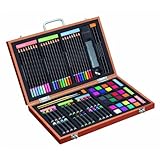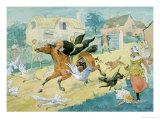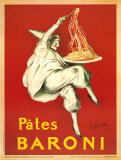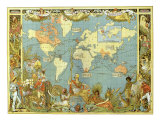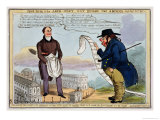|
|
|
|
|
Randolph Caldecott
b. 3-22-1846; Chester, England
d. 2-12-1886; St. Augustine, FL on a trip
Randolph Caldecott, whose art illustrated magazines and children's books is the namesake of the Caldecott Medal, awarded to the artist of the most distinguished American picture book for children.
• FYI - John Gilpin, a real-life character whose exploits became legendary, was featured in the comic ballad The Diverting History of John Gilpin (1782), by William Cowper. Cowper had heard the story from a friend.
|
|
|
|
Leonetto Cappiello
b. 3-9-1875; Livorno, Italy
d. 2-2-1942; Cannes, France
Poster art designer Leoneeto Cappiello is often called “the father of modern advertising” being the first to “use bold figures popping out of black backgrounds”, in stark contrast to the painterly posters of his predecessors like Jules Cheret.
• more food posters
|
|
|
|
Adolphe Mouron Cassandre
b. 1-24-1901; Kharkov, Ukraine
d. 6-17-1968; Paris (suicide)
Adolphe Mouron Cassandre is noted for his poster and typeface designs such as the Yves Saint-Laurent logo he created in 1963.
FYI - The SS Normandie ocean liner was the largest and fastest passenger ship afloat when she entered service in 1935. In 1942, after seized by US authorities and renamed the USS Lafayette, she burned and sank at the New York Passenger Ship Terminal while being converted to a troop ship for WWII.
|
|
|
|
Jules Cheret
b. 5-31-1836; Paris, France
d. 9-23-1932
Jules Chéret, considered the “father of the modern poster”, was both an artist who studied the works of Rococo artists Jean-Honoré Fragonard and Antoine Watteau, and a technician, who could reproduce his images with color lithography, revolutioning advertising for cabarets, theaters, novels, beverages, and cosmetics to name a few outlets. His images are iconic of the Belle Époque era.
Cheret is also called the “father of women's liberation” for his depiction the women of Paris, called ‘Cherettes’, were “joyous, elegant and lively” rather than only the polar opposites of puritan or prostitute.
• Sarah Bernhardt posters
|
|
|
|
|
|
|
|
|
|
Walter Crane
b. 8-15-1845; Liverpool, England
d. 3-14-1915
The artist Walter Crane was closely associated with the Socialist movement and did as much as his colleague William Morris, to bring art into the daily life of all classes.
Walter Crane quotes ~
• “Let the designer lean upon the staff of the line – line determinative, line emphatic, line delicate, line expressive, line controlling and uniting.”
• “We want a vernacular in art. No mere verbal or formal agreement, or dead level of uniformity but that comprehensive and harmonizing unity with individual variety which can be developed among people politically and socially free.”
• “The basis of all art ... might be described as different kinds of drawing. Each artistic craft ... is a method of drawing, each is actually based on a drawing as a preliminary stage of its existence.”
• Labor posters
• map posters
• The Tempest illustration
|
|
|
|
George Cruikshank
b. 9-27-1792; London, England
d. 2-1-1878
Illustrator George Cruikshank worked with various authors, including his friend Charles Dickens, William Ainsworth and Richard H. Barham (aka Thomas Ingoldsby), as well as turning his talents toward satirical social commentary on the events of his time.
FYI - John Bull, a personfication of England, is usually depicted as a middle-aged, stout man, wearing a Union Jack waistcoat. Bull, well intentioned and full of common sense, was the creation of Dr. John Arbuthnot circa 1712. Cruikshank used the Bull figure in this political cartoon to point out the extravaganzas of George IV and his architect John Nash.
|
|
|
|
Currier & Ives, “the Grand Central Depot for Cheap and Popular Prints”, was the printmaking company of artist Nathaniel Currier (1813-1888) and bookkeeper James Merritt Ives (1824-1895). Currier & Ives specialized in reproducing illustrations of current, newsworthy events as black and white lithographs that were later hand colored.
Currier and Ives were given the stamp of good homemaking approval by Catharine Esther Beecher and Harriet Beecher Stowe, authors of American Woman's Home (1869) “The great value of pictures for the home would be, after all, in their sentiment. They should express the sincere ideas and tastes of the household and not the tyrannical dicta of some art critic or neighbor.” With all due respects, perhaps the esteemed Beecher sisters should consider the effect of their own advice.
• more Civil War posters
|
|
|
|
previous page | top | next
Poster Artists List > a | b | C | d | e-f | g | h-i-j-k | l | m | n | o | p-q | r | s | t | u-v-w-x-y-z
|
|
I have searched the web for visual, text, and manipulative curriculum support materials - teaching posters, art prints, maps, charts, calendars, books and educational toys featuring famous people, places and events - to help teachers optimize their valuable time and budget.
Browsing the subject areas at NetPosterWorks.com is a learning experience where educators can plan context rich environments while comparing prices, special discounts, framing options and shipping from educational resources.
Thank you for starting your search for inspirational, motivational, and educational posters and learning materials at NetPosterWorks.com. If you need help please contact us.
|
|
|








